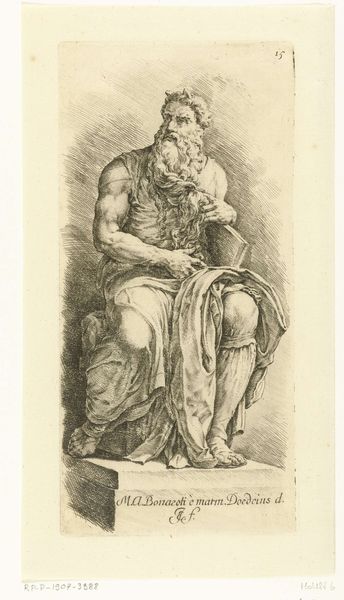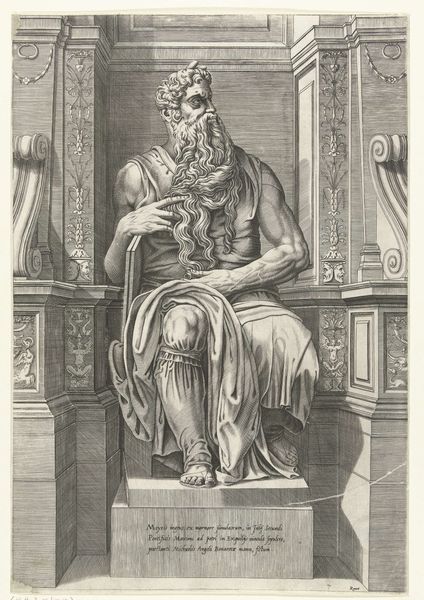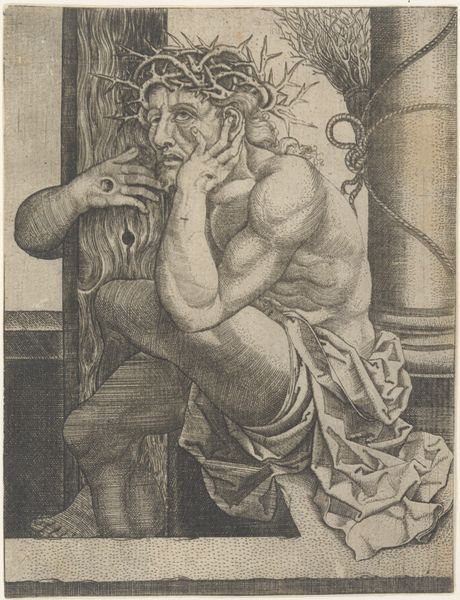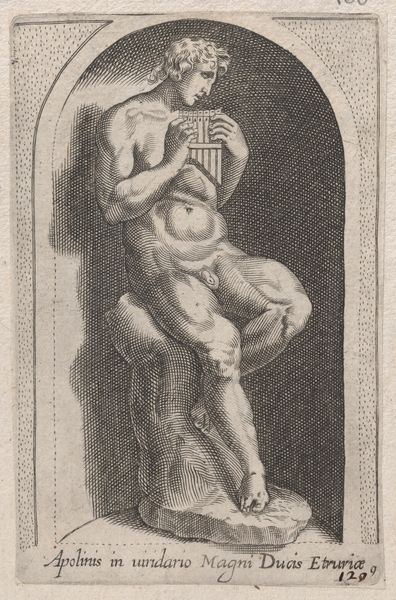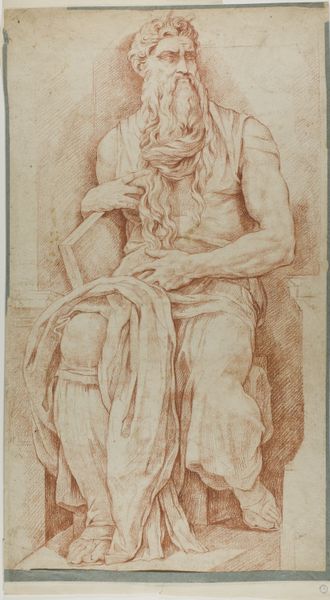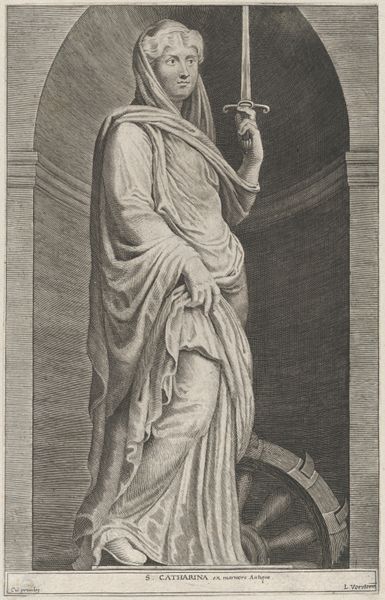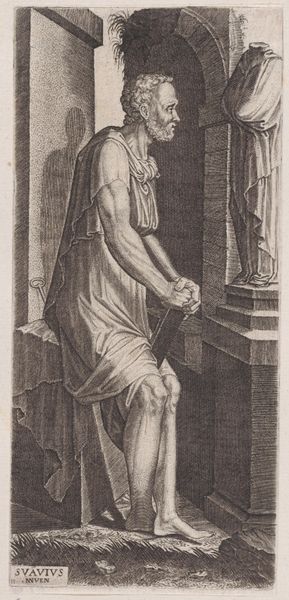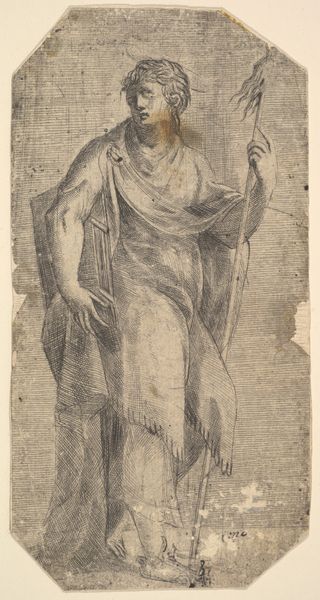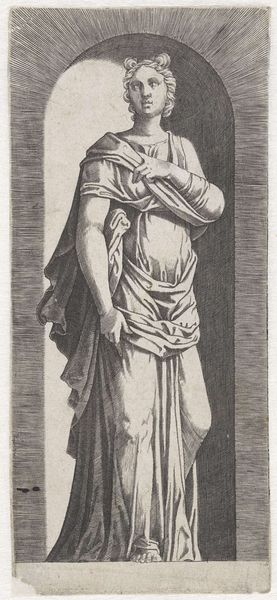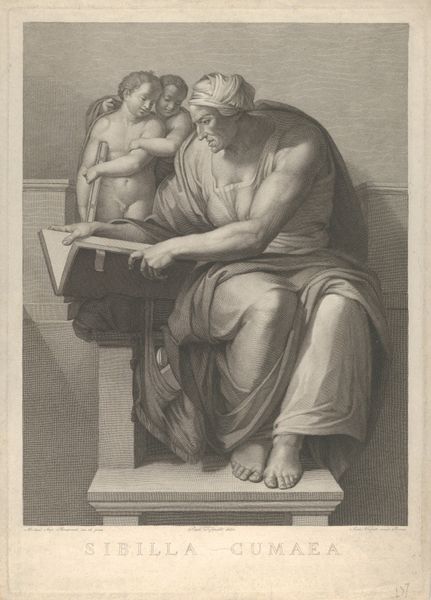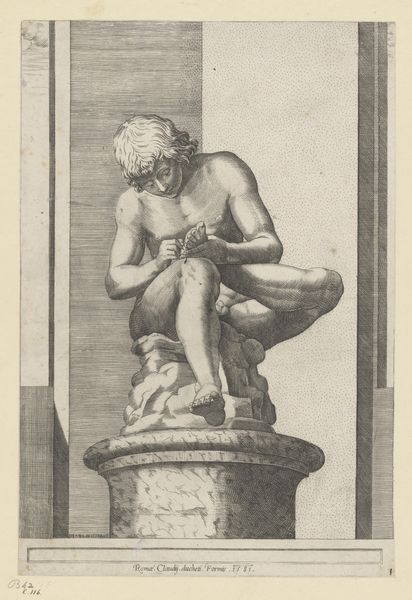
Speculum Romanae Magnificentiae: Moses after the sculpture by Michelangelo 1530 - 1580
0:00
0:00
drawing, print, sculpture, engraving
#
portrait
#
drawing
# print
#
figuration
#
11_renaissance
#
sculpture
#
line
#
portrait drawing
#
italian-renaissance
#
engraving
Dimensions: mount: 19 1/8 x 12 13/16 in. (48.5 x 32.5 cm) sheet: 14 3/8 x 9 5/8 in. (36.5 x 24.5 cm)
Copyright: Public Domain
Curator: This image strikes me as one of profound contemplation; the stark lines lend a somber quality to the subject’s powerful physique. Editor: Indeed. This engraving by Jacob Matham, dating to sometime between 1530 and 1580, is titled "Speculum Romanae Magnificentiae: Moses after the sculpture by Michelangelo." It resides today at the Metropolitan Museum of Art. It offers us an intriguing perspective on a work that held significant sway during the Renaissance. Curator: It’s interesting how Matham chose to portray Moses, emphasizing his muscularity. How does that impact the viewing public of the era? Does it reflect an emerging understanding of leadership and power, rooted in not just religious authority, but embodied strength? Editor: Certainly, the image operates within the complex cultural landscape of the 16th century. Matham’s print participates in the visual rhetoric surrounding not just religious but also civic leadership, with imagery used strategically. It also reflects how Michelangelo’s sculpture impacted Rome’s artistic circles; the reproduction disseminated the Italian master's vision beyond those with the means to travel and see the original work. The ‘Speculum’ series as a whole was about documenting and propagating Roman magnificence. Curator: It speaks to broader questions of how art, even in reproduction, serves ideological purposes, and constructs social hierarchies. How are those structures of meaning and influence still apparent in this piece today, centuries later? Considering who gets represented, and how? Editor: Well, thinking about the print's circulation brings the discussion around the concept of art's democratizing potential – as engravings allowed greater accessibility, fostering broader engagement with artistic innovation, and potentially leveling power dynamics that historically restricted access to certain spheres of representation. However, the choice of *what* gets reproduced, the choices in *how* something is reproduced also highlights art's involvement in maintaining cultural hierarchies. Curator: It invites reflection, then, on how historical artwork is instrumentalized within power structures and identity formations. Editor: Ultimately, analyzing pieces like this teaches us how political and cultural dialogues reverberate across history.
Comments
No comments
Be the first to comment and join the conversation on the ultimate creative platform.
